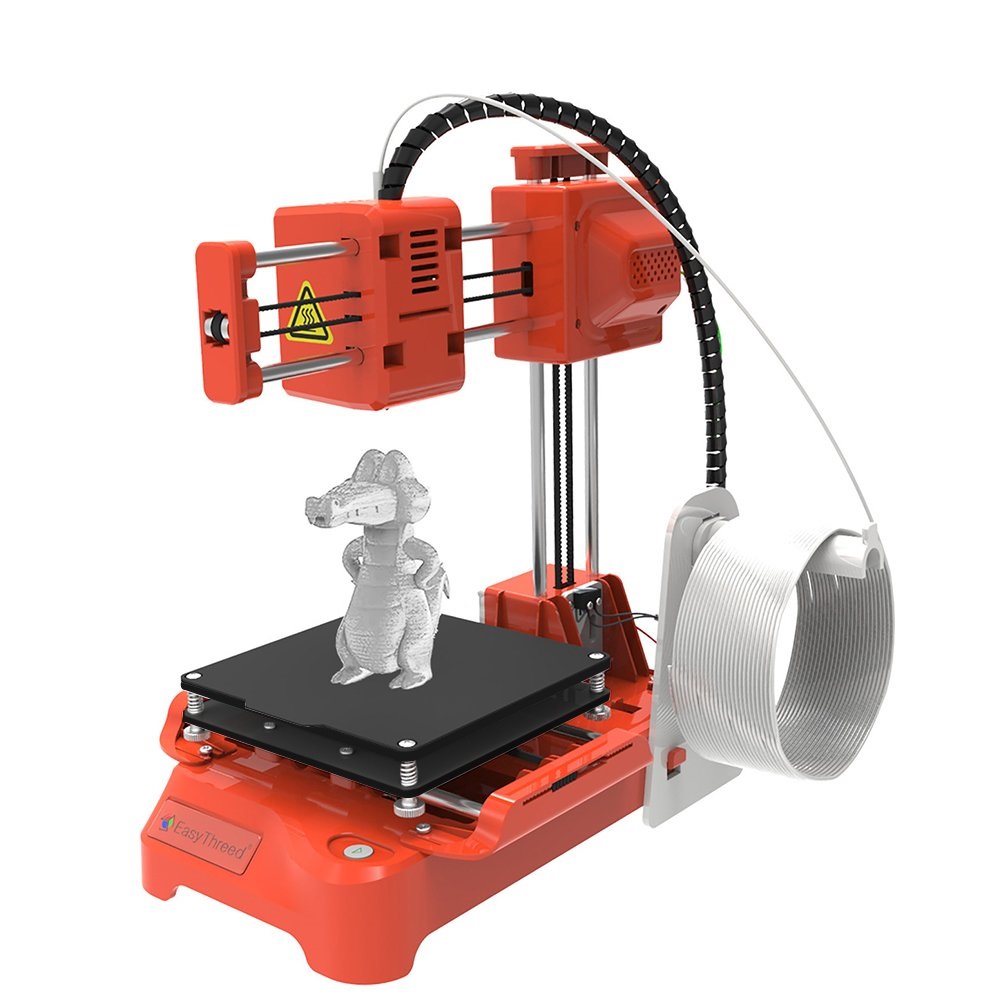Introduction to 3D Printing
3D printing, or additive manufacturing, is a technology that transforms digital models into physical objects. It involves laying down successive layers of material, mostly plastic or metal, to build up the final shape. This modern manufacturing process allows for complex designs that would be difficult or impossible to achieve with traditional methods.
The concept is quite simple but revolutionary. Instead of carving or shaping an object out of a block of material, a 3D printer adds material where it’s needed, layer by layer. This method not only saves material but can also produce items with intricate internal structures.
3D printers come in various forms and sizes, suited to different tasks. From small desktop machines that can print simple toys or household items to large industrial printers capable of creating aircraft parts, the range is extensive. The flexibility of 3D printing has sparked a surge in creativity and innovation across many sectors.
To start 3D printing, you need a digital blueprint, typically a CAD (Computer-Aided Design) file, which you can create or download. The printer reads this file, slices it into thin layers, and systematically creates the object from the bottom up.
This technology is not just for professionals—hobbyists, educators, and DIY enthusiasts are also embracing 3D printing. It’s a tool that transcends traditional boundaries, offering limitless possibilities to anyone eager to explore its potential.
History and Evolution of 3D Printing
The journey of 3D printing began in the late 70s and has been evolving ever since. Initially conceptualized as a means to produce models and prototype parts quickly, the first patent application for this technology was filed by Dr. Hideo Kodama in Japan, but he didn’t commercialize the technique.
In the 1980s, Chuck Hull invented stereolithography (SLA), which used UV lasers to solidify photopolymer resins, layer by layer, to form 3D objects. Hull’s invention laid the groundwork for the 3D printing revolution, leading to the foundation of 3D Systems, a pioneering company in the field.
The 90s saw the development of new methods, such as Fused Deposition Modeling (FDM) by Stratasys and Selective Laser Sintering (SLS) by Carl Deckard at the University of Texas. These processes expanded the possibilities, allowing more durable and functional materials to be printed.
By the 2000s, 3D printing technology had improved significantly in terms of speed, materials, and the precision of finished items. These advancements led to a broader adoption of 3D printing across various industries.
The early 2010s marked a milestone as patents for key technologies expired, resulting in a surge of interest and innovation. The maker movement embraced 3D printing, and affordable desktop printers began to appear in homes and schools.
Today, 3D printing has evolved into a tool used not just for prototyping but for full-scale production across a plethora of sectors, from medical to automotive to aerospace. As the technology continues to develop, it promises to shape the future of manufacturing, healthcare, and more with its ever-expanding applications.
Key Concepts in 3D Printing Technology
3D printing technology is built around a few core concepts. Understanding these can be helpful for beginners and those looking to get involved in 3D printing.
- Additive Manufacturing: Unlike traditional methods that remove material, 3D printing adds material, layer by layer, to build an object. Each layer is a thin slice of the final product.
- Digital Model: Before printing, you need a digital design. This is often a CAD (Computer-Aided Design) file that represents the object in three dimensions.
- Slicing: The digital model is ‘sliced’ into many horizontal layers using software. This is necessary for the printer to create the object layer by layer.
- Materials: Various materials can be used in 3D printing. Common ones include plastics like PLA or ABS, metals, and resins.
- Precision: 3D printers follow the design file accurately, which allows the production of complex and detailed objects with high precision.
- Flexibility and Customization: 3D printing allows for the creation of custom, one-of-a-kind objects without the need for expensive tooling or molds.
- Speed: Some 3D printing processes can produce objects in a matter of hours, faster than traditional manufacturing methods.
By grasping these key concepts, you can better understand how 3D printers work and the possibilities they offer.
Types of 3D Printers and Their Workings
The world of 3D printing houses a variety of machines each catering to different printing needs. The main types include FDM, SLS, SLM, SLA, and DLP. Knowing how each type operates will guide beginners in choosing the right printer for their projects.
Fused Deposition Modeling (FDM) / Fused Filament Fabrication (FFF)
FDM, also known as FFF, is the most common type of 3D printing. An FDM printer heats and extrudes thermoplastic filament. It lays down the material layer by layer to create the 3D object. FDM printers are widely used due to their simplicity and affordability.
Selective Laser Sintering (SLS) and Melting (SLM)
SLS printers use a laser to fuse powder particles, forming solid structures. SLM is similar but works specifically with metals. Both SLS and SLM build objects layer by layer and are known for strong, durable outputs. They often come at a higher cost and complexity compared to FDM.
Stereolithography (SLA) and Digital Light Processing (DLP)
SLA printers use a laser to cure and solidify liquid resin. DLP printers, while similar to SLA, use a projector to bind the resin. Both create objects with high precision and fine detail. These printers are favored for intricate designs and smooth surface finishes.
Preparing a Digital Model for 3D Printing
Before you can bring your 3D printing ideas to life, you must first convert them into a digital format. This means creating a 3D model using specialized software. The process begins with designing your object in a virtual space and ends with translating it into a language that your 3D printer can understand. This section will explore the important stages from CAD design to the slicing process.
Designing with CAD Software
The first step is to design your item. You use CAD software for this task. The CAD program allows you to create complex 3D shapes with precision. You can either start from scratch or modify existing designs. Many CAD applications are available, some even for free. Beginners should look for user-friendly software to start learning about 3D modeling without being overwhelmed.
Converting and Slicing Your Model
After completing your design, you then convert it to a 3D printer-friendly format, usually STL (STereoLithography) or OBJ. These files store information on the surface geometry of the model. With a proper file in hand, the next phase is slicing. Here, you use slicing software to divide your model into thin, flat layers. The software generates a G-code file, which gives the printer step-by-step instructions on how to build each layer. Slicing settings can affect print quality, strength, and time. So, it’s important to choose the right parameters for your specific project and printer.
The 3D Printing Process Explained
To begin 3D printing, you must understand the process. It’s straightforward and consists of setting up the machine, printing objects layer by layer, and sometimes, post-processing.
Setting up the Printer
Setting up involves assembling parts, connecting cables, and installing software. You’ll choose materials and load them into the printer. Calibration is key to ensure accurate prints. Read the manual carefully, and watch tutorial videos if needed.
Layer-by-Layer Object Creation
3D printing builds items from the bottom up, adding thin layers of material. The printer’s head moves over the print bed, laying down material according to the digital model. It repeats this process, layer by layer, until the item is complete. The speed of creation varies based on the object’s size and complexity.
Post-Processing of 3D Printed Objects
After you print an object, often, it’s not finished yet. Post-processing steps refine the print and improve its appearance and strength. Here are common post-processing methods for 3D printed items:
Removing Supports: Objects may need structures to prevent collapse during printing. After printing, you remove these supports.
Sanding: Sanding smooths the surface of your print. It helps remove any rough edges or lines between layers.
Painting: You can paint your object to add color or detail. Use paints suited for the material of your print.
Sealing: To make your object stronger or waterproof, apply a sealant. Sealants also add shine and protection.
Gluing: If your print has multiple parts, you may need to glue them together. Use glue that matches your print’s material.
Assembling: Some prints are made of several parts. After printing and post-processing, you assemble them.
Post-processing is important for a finished, functional, and visually pleasing 3D printed object. It can be time-consuming but rewarding, giving your 3D prints a professional touch.
Applications of 3D Printing Across Various Industries
The reach of 3D printing extends far beyond prototyping; it has touched various industries, enhancing production and custom design.
Consumer Goods and Customization
3D printing shines in the realm of consumer goods. It offers personalized items, tailored to fit personal needs. Products like jewelry, clothing, and home decor come to life with unique designs. This tech also supports small businesses, helping them create custom goods without large costs.
Medical Advancements with 3D Printing
In healthcare, 3D printing is a game changer. It prints implants, prosthetics, and even organic tissues. This progress speeds up recovery and makes treatments more effective. Hospitals and clinics now use printed models for surgery planning, improving patient outcomes.
Automotive Industry Adopting 3D Printing
Automakers now use 3D printing for both design and production. This move cuts costs and leads to quicker development cycles. With printed parts, car companies fix old models and create custom, new ones. This blend of tradition and innovation is reshaping the industry.
Aerospace Innovations and Applications
Aerospace has embraced 3D printing for crafting lighter and stronger components. Parts like engine sections and cabin fixtures are now printed with precision. This advance reduces waste and saves time in manufacturing. It points toward a more efficient and sustainable future in aerospace.
Selecting the Right 3D Printer for Your Needs
Choosing the right 3D printer involves several factors. As a beginner, you need to consider your intended use, the types of materials you plan to print with, and your budget.
Considerations for Beginners
When starting out with 3D printing, keep the following points in mind:
- Purpose: Think about what you want to make. Simple toys or complex parts?
- Printer Type: Different printers suit different projects. Research FDM, SLA, and others.
- Material Compatibility: Ensure the printer supports materials you want to use, like PLA or ABS.
- Print Size: Consider the maximum size of objects you plan to print.
- Resolution: Higher resolution printers create more detailed objects.
- Ease of Use: Look for printers with user-friendly interfaces and good support.
- Price: Set a budget. Factor in the cost of the printer and ongoing materials.
Your first printer should match your main goals and stay within your budget. It’s better to start with a simple and affordable printer if you are new to this. Once you’ve learned the basics, you can always upgrade to a more advanced machine.
Conclusion: The Future of 3D Printing
The path of 3D printing looks bright and unstoppable. Its growth opens doors to endless creativity and innovation. With every passing year, we see 3D printing become faster, cheaper, and more diverse in its capabilities. The technology is advancing at rapid speeds, expanding the boundaries of what we can make.
The future hints at even more groundbreaking strides in various fields. Imagine 3D-printed buildings or organs ready for transplant. The possibilities are vast and exciting. Also, as printers become more user-friendly, more people can use them. Soon, having a 3D printer in the home could be as common as having a microwave.
Moreover, sustainability becomes a key focus. The additive nature of 3D printing saves materials and reduces waste. It’s a step towards eco-friendly production. Combined with the use of biodegradable materials, 3D printing can be a green revolution in making things.
Lastly, the beauty of 3D printing lies in its power to customize. It gives power to individuals to create what they need, when they need it. This personalized future can lead to a new era in manufacturing, healthcare, and beyond. 3D printing is not just a trend; it’s the next big leap in how we create and innovate.




Leave a Reply